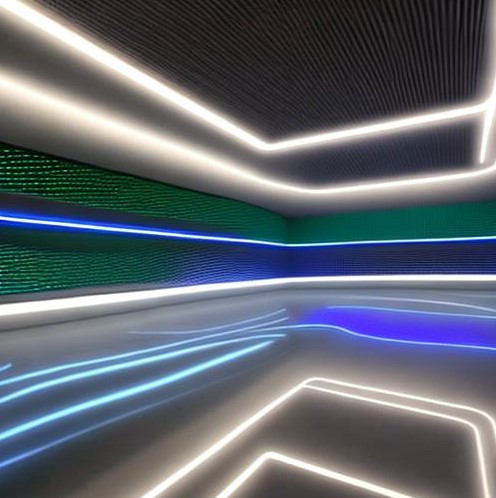How many lumens do I need?
LED lights for campervan use tend to come in three options, warm white, bright white and color changing lights, usually RGB (Red, green and blue)
The brightness of each is measured in lumens. Lumens are a more accurate and practical way of measuring light output compared to wattage, which measures the amount of energy used by a light source. This is because different types of light sources can have the same wattage but produce different amounts of light output.
As a rule of thumb, you’ll need approximately 20 lumens per square foot for ambient lighting, and between 50-100 lumens per square foot for task lighting. Keep reading to find out how to calculate this.
Task lighting is where you need to see what you’re doing clearly, such as reading or cooking, whereas ambient lighting is background lighting used when watching TV for example.
Multiply the room’s total square footage by the desired lumens per square foot to determine the total lumens needed.
How many lumens is a metre of LED lights?
The number of lumens per meter of LED lights can vary depending on the specific LED strip and its manufacturer. However, as a general guideline, here are the typical lumens per meter for warm white, bright white, and RGB LED strips:
- Warm white LED strips typically have a luminous flux of around 300-400 lumens per meter.
- Bright white LED strips usually have a luminous flux of around 600-800 lumens per meter.
- RGB LED strips do not have a standard luminous flux, as they can emit different colors and brightness levels depending on the specific LED chips used and the color combination chosen.
It’s important to note that these values are generalizations and may vary depending on the specific LED strip you’re considering. Additionally, the brightness of an LED strip can be affected by factors such as the quality of the LED chips, the efficiency of the power supply, and the type of dimmer used.
How to measure the square footage of your RV or campervan
In order to measure the square footage of your vehicle you’ll need to measure the longest internal length and multiply that by the widest internal width.
For example, the back of my short wheelbase Transit van is 10ft in length and the width is 5.5ft. This makes the overall area 55sq ft (10 x 5.5 = 55)
Task lighting calculation
So for effective task lighting in the back of my van, I need a minimum of 50 lumens per square foot, so 50 lumens x 55 sq ft = 2750
Bright white LED strips have around 700 lumens per metre so 2750 divided by 700 = 3.92m So we can round that up to 4 metres.
Ambient lighting calculation
So for ambient lighting in the back of my van, I need a minimum of 20 lumens per square foot, so 20 lumens x 55 sq ft = 1100
Warm white LED strips have around 350 lumens per metre so 1100 divided by 700 = 3.14m
So we can round that down to 3 metres.
Keep in mind that these are general guidelines and the number of LED lights needed can vary based on individual preferences and the specific lighting needs of the space. Additionally, other factors such as the height of the ceiling and the layout of the room can also affect the number of LED lights needed.
How do I choose between ambient and task lighting in my RV or campervan?
When choosing between ambient and task lighting in your RV or campervan, it’s important to consider your specific lighting needs and how you’ll be using the space. Here are some factors to consider:
- Purpose of the space: If you plan to use the space primarily for work or activities that require focused lighting, such as cooking, reading, or working on a laptop, task lighting may be the better choice. If you plan to use the space for relaxation or socializing, ambient lighting may be more appropriate.
- Lighting placement: Consider the placement of your lighting fixtures and how they will affect the overall atmosphere of the space. For example, overhead lighting can create a more diffuse, ambient light, while task lighting should be directed toward the specific area where it’s needed.
- Energy efficiency: LED lights are a popular choice for RV and campervan lighting because they are energy-efficient and produce minimal heat. However, it’s important to choose the right color temperature for your needs – warm white is typically preferred for ambient lighting, while cool white is better for task lighting.
- Style and design: Consider the overall style and design of your RV or campervan and choose lighting fixtures that complement your aesthetic. For example, minimalist, modern fixtures may be better suited for task lighting, while softer, more decorative fixtures may be better for ambient lighting.
Ultimately, the choice between ambient and task lighting will depend on your specific needs and preferences. It’s important to consider factors such as purpose, placement, energy efficiency, and design when selecting lighting fixtures for your RV or campervan.
AFFILIATE DISCLAIMER
The USBWOW website is supported by our visitors. Some of the product links on this website are through affiliate schemes such as Amazon. This means that I earn a small commission if you choose to purchase something at no extra cost to yourself.

